
|
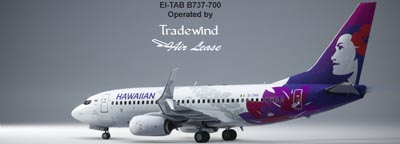
EI-TAB Tradewind Air Lease Hawaiian B737 SSW
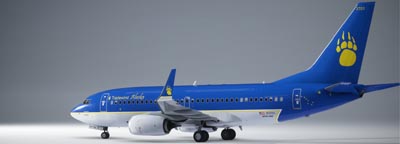
N73701 Tradewind Alaska B737 BW
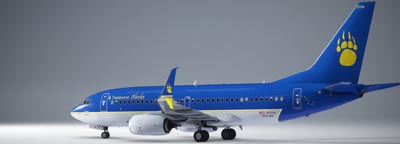
N73704 Tradewind Alaska B737 SSW
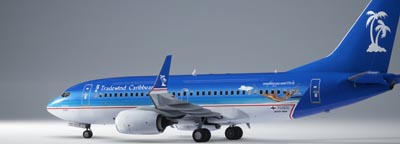
PJ-GCG Tradewind Caribbean B737 BW
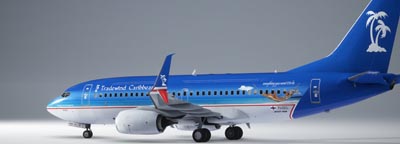
PJ-GCL Tradewind Caribbean B737 SSW
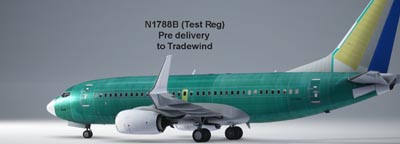
N7188B (Test Reg, Pre delivery to Tradewind) Factory B737 BW
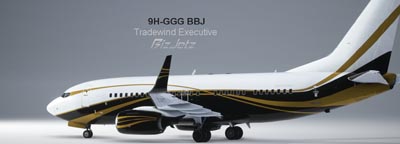
9H-GGG Tradewind Executive B737 BW BBJ
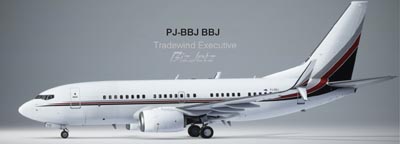
PJ-BBJ Tradewind Executive B737 SSW BBJ
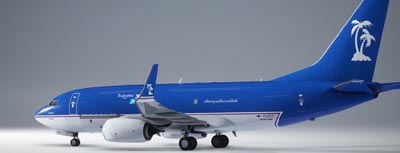
PJ-GCZ Tradewind Logistics B737 BDSF WL
Additional B737 ground vehicles 'Tradewind Aviation Services'
|
Boeing
737-700/BDSF/BBJ NG3 ~ PMDG
Boeing's
Next Generation 737-800 and 737-900 are the largest members
of the strong selling 737 family. Unlike the other Next
Generation 737s, the -800 and -900 introduce new fuselage
lengths, extending 737 single class seating range out
to 189, compared with 100 in the original 737-100.
Like the -600 and -700, the -800 and -900 feature the
Next Generation improvements including more efficient
CFM56-7B turbofans, the new wing with greater chord, span
and wing area, larger tail surfaces and the 777 style
EFIS flightdeck with six flat panel LCDs which can present
information as on the 777 or as on the 737-300/400/500
series, the latter allowing a common pilot type rating
for the two 737 families. A HUD is optional. BBJ style
winglets are offered as an optional feature for the -800
|
MSFS ONLY
|
Other Required Files:
The payware B737-700 by PMDG
|
Repaint by JF
|
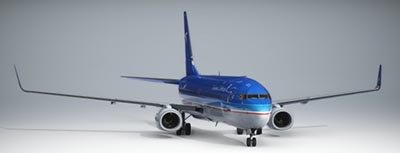
PJ-GCH Tradewind Caribbean 'Isla de la Juventud' B738 Blended Winglets
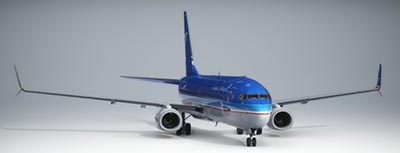
PJ-GCM Tradewind Caribbean 'Gonave Island' B738 Split Scimitar Winglets
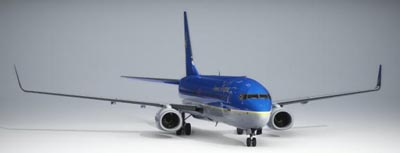
N73801 Tradewind Alaska 'Juneau' B738 Blended Winglets
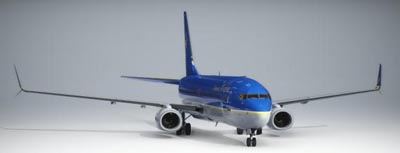
N73804 Tradewind Alaska 'Yakutat' B738 Split Scimitar Winglets
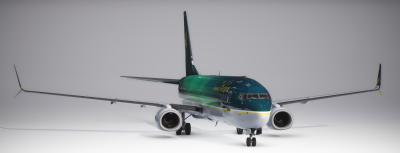
N73805 Tradewind Alaska 'Aurora Borealis' B738 Split Scimitar Winglets (Aurora Borealis Special Livery)
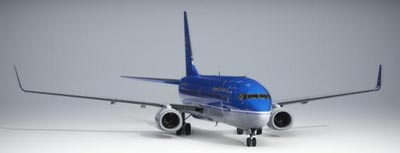
PH-TEB Tradewind European 'Madrid' B738 Blended Winglets
Front fuselage replacement file due to wrong registration
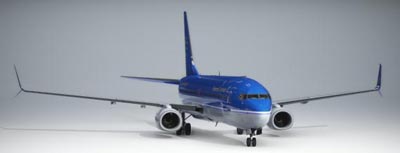
PH-TEC Tradewind European 'Athens' B738 Split Scimitar Winglets
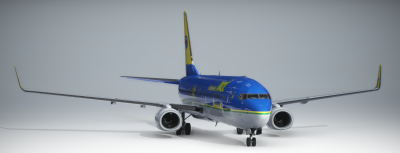
PP-GCP Tradewind Brazil 'Porto Alegre' B738 Blended Winglets
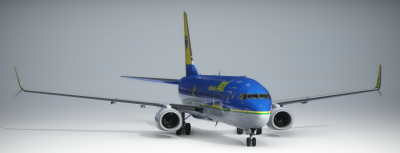
PP-GCQ Tradewind Brazil 'Salvador' B738 Split Scimitar Winglets
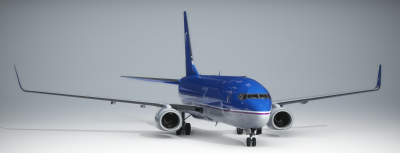
PJ-GDA Tradewind Cargo 'Dominica' B738BCF Blended Winglets
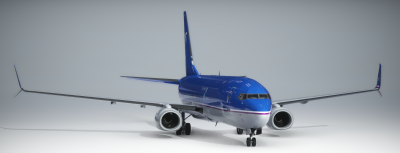
PJ-GDB Tradewind Cargo 'Martinique' B738BCF Split Scimitar Winglets
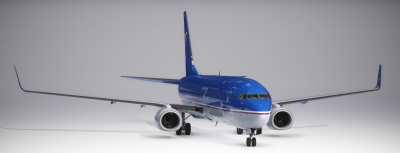
PJ-GDC Tradewind Cargo 'Montserrat' B738BDSF Blended Winglets
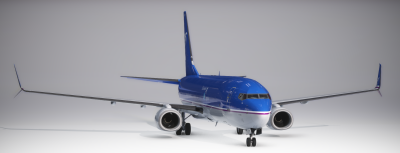
PJ-GDD Tradewind Cargo 'Antigua' B738BDSF Split Scimitar Winglets
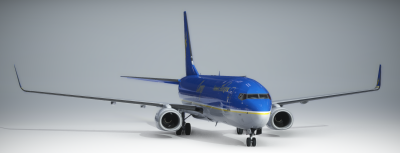
N73831 Tradewind Alaska Cargo 'Rainy Pass' B738BCF Blended Winglets
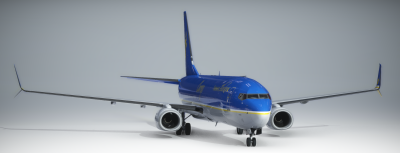
N73832 Tradewind Alaska Cargo 'Iditarod' B738BCF Split Scimitar Winglets
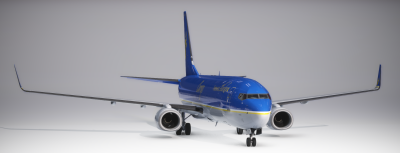
N73833 Tradewind Alaska Cargo 'Unalakleet' B738BDSF Blended Winglets
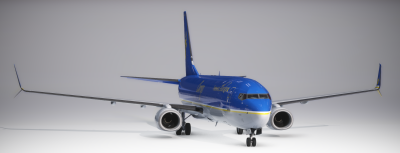
N73834 Tradewind Alaska Cargo 'Cripple' B738BDSF Split Scimitar Winglets
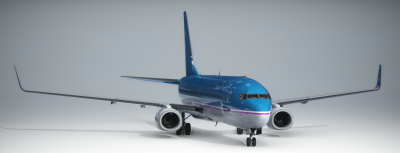
F-OHBA Tradewind Pacific 'Manuae' B738 Blended Winglets
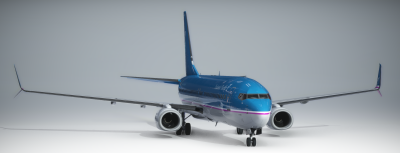
F-OHBB Tradewind Pacific 'Maupihaa' B738 Split Scimitar Winglets
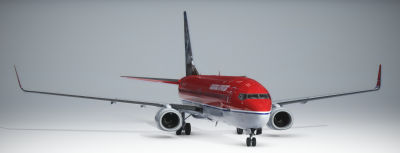
CU-T7384 Tradewind Express 'Merida Express' B738 Blended Winglets
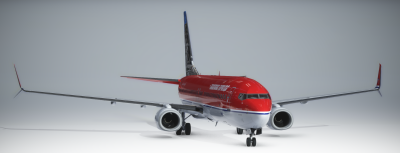
CU-T7385 Tradewind Express 'Houston Express' B738 Split Scimitar Winglets
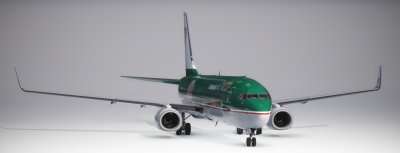
XA-GCH Tradewind Mexico 'Teotihuacán' B738 Blended Winglets
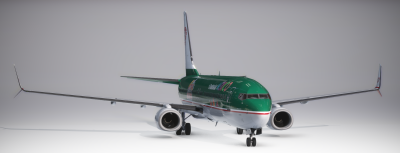
XA-GCI Tradewind Mexico 'Quetzalcóatl' B738 Split Scimitar Winglets
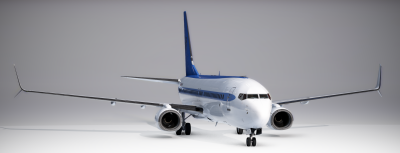
8P-BBB Tradewind Executive B738 BBJ2 Split Scimitar Winglets
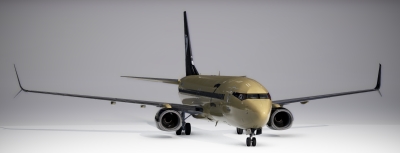
P4-TEB Tradewind Executive B738 BBJ2 Split Scimitar Winglets (Zorro Scheme)
More to follow...?
|
Boeing
737-800/BDSF/BBJ NG3 ~ PMDG
Boeing's
Next Generation 737-800 and 737-900 are the largest members
of the strong selling 737 family. Unlike the other Next
Generation 737s, the -800 and -900 introduce new fuselage
lengths, extending 737 single class seating range out
to 189, compared with 100 in the original 737-100.
Like the -600 and -700, the -800 and -900 feature the
Next Generation improvements including more efficient
CFM56-7B turbofans, the new wing with greater chord, span
and wing area, larger tail surfaces and the 777 style
EFIS flightdeck with six flat panel LCDs which can present
information as on the 777 or as on the 737-300/400/500
series, the latter allowing a common pilot type rating
for the two 737 families. A HUD is optional. BBJ style
winglets are offered as an optional feature for the -800
|
MSFS ONLY |
Other Required Files:
The payware B737-800 by PMDG
|
Repaint by Christian Breuer
Tailpictures of Tradewind Express Aircraft courtesy by Stefaan Cappelle
|
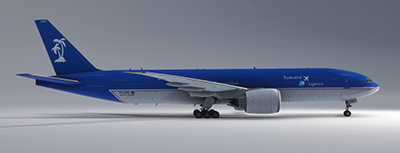
PJ-LRG Tradewind Logistics 'Mundo Transportadó'
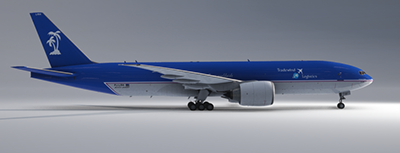
PJ-LRH Tradewind Logistics 'Curaçao Trader'
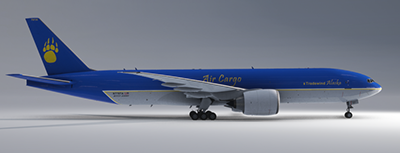
N778TA Tradewind Alaska Cargo 'Alaskan Essence'
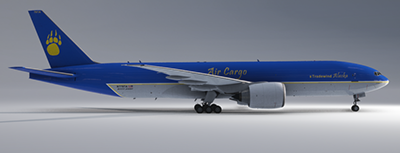
N779TA Tradewind Alaska Cargo 'Alaskan Trader'

N770TA Tradewind Alaska 'King Salmon'

N771TA Tradewind Alaska 'Bethel'

PJ-TFA Tradewind Caribbean 'Caribbean Sunset'

PJ-TFA (F1) Tradewind Caribbean 'Caribbean Sunset'

PJ-TFB Tradewind Caribbean 'Caribbean Mood'

PJ-TFB (F1) Tradewind Caribbean 'Caribbean Mood'
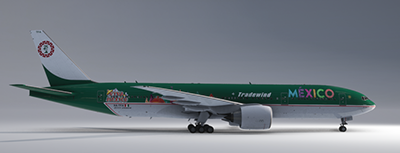
XA-TFA Tradewind Mexico 'Oaxaca'
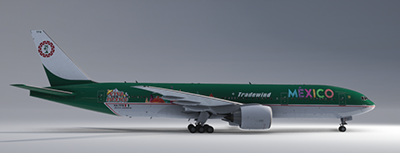
XA-TFB Tradewind Mexico 'Durango'
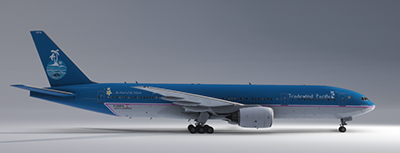
F-OHFA Tradewind Pacific 'Pacific Sunrise'
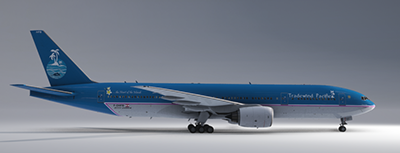
F-OHFB Tradewind Pacific 'Pacific Sun'
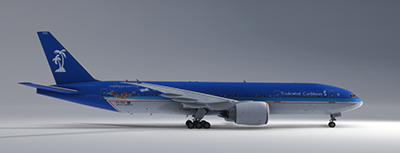
PJ-TGC (STD) Tradewind Caribbean 'Caribbean Essence'
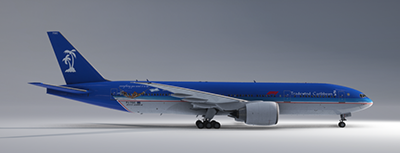
PJ-TGC (F1) Tradewind Caribbean 'Caribbean Essence'
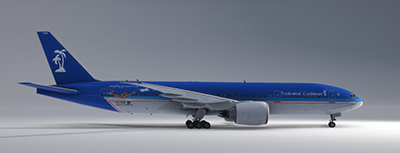
PJ-TGD (STD) Tradewind Caribbean 'Nicaragua'
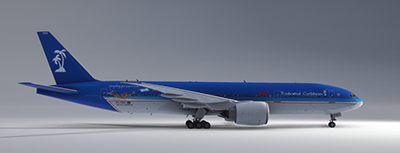
PJ-TGD (F1) Tradewind Caribbean 'Nicaragua'
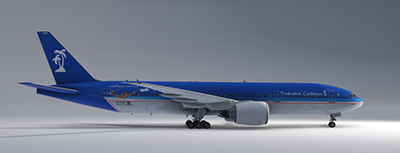
PJ-TGE (STD) Tradewind Caribbean 'Caribbean Endeavour'
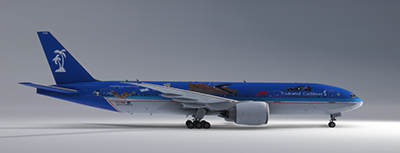
PJ-TGE (F1-Theme) Tradewind Caribbean 'Caribbean Endeavour'
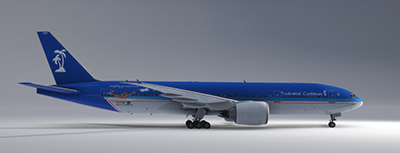
PJ-TGF (STD) Tradewind Caribbean 'Caribbean Nights'
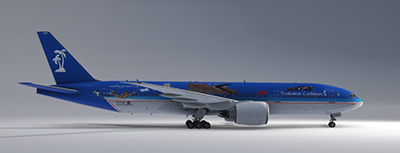
PJ-TGF (F1-Theme) Tradewind Caribbean 'Caribbean Nights'
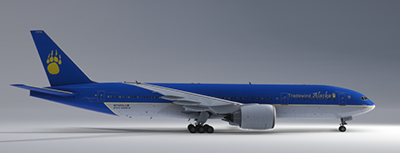
N774TA Tradewind Alaska 'Gateway'
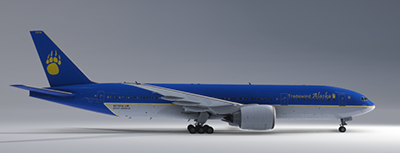
N775TA Tradewind Alska 'Iditarod'
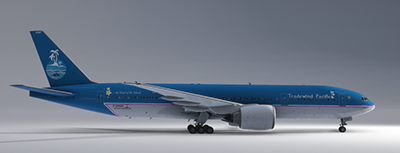
F-OHGF Tradewind Pacific 'Pacific Flair'
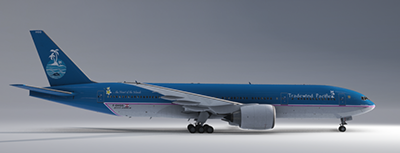
F-OHGG Tradewind Pacific 'Pacific Essence'



|
Boeing
777-200ER/LR/F ~ PMDG
Boeing's
advanced widebody 777 twin incorporates more advanced
technologies than any other previous Boeing airliner,
and has been progressively developed into increasingly
longer range developments.
The 777 was originally conceived as a stretched 767, but
Boeing instead adopted an all new design. Notable 777
design features include a unique fuselage cross section,
Boeing's first application of fly-by-wire, an advanced
technology glass flightdeck with five liquid crystal displays,
comparatively large scale use of composites (10% by weight),
and advanced and extremely powerful engines. The 777 was
also offered with optional folding wings where the outer
6m/21ft of each would fold upwards for operations at space
restricted airports.
The basic 777-200 as launched in October 1990 was offered
in two versions, the basic 777-200 (initially A-Market)
and the increased weight longer range 777-200IGW (Increased
Gross Weight, initially B-Market). The IGW has since been
redesignated 777-200ER.
The 777-200 first flew on June 12 1994, with FAA and JAA
certification awarded on April 19 1995. The FAA awarded
full 180 minutes ETOPS clearance for PW4074 -200s on May
30 that year. First customer delivery was to United Airlines
in May 1995. The first 777-200IGW/ER was delivered to
British Airways in February 1997.
The 777-100X was a proposed shortened ultra long range
(16,000km/8635nm) model, dropped in favour of the 777-200LR
(originally 777-200X) design study. Boeing claims the
777-200LR will be the longest ranging airliner, capable
of flying 16,417km (8865nm) - 18 hours flying time. It
will achieve this with awesomely powerful 489kN (110,000lb)
thrust GE90-110B1 turbofans, a significantly increased
max takeoff weight and optional auxiliary fuel tanks in
the rear cargo hold. Other changes include 2m (6.5ft)
raked wingtips, new main landing gear, structural strengthening
and optional overhead crew and flight attendant rest stations
above the cabin. The 777-200LR was launched in 2000, but
is now delayed until 2006.
|
MSFS ONLY
|
Other Required Files:
The payware B777-200F by PMDG
Other Suggested Files:
List and downloads for different cargo lables: click me
And how to use them: click here |
Repaint by Christian Breuer
|
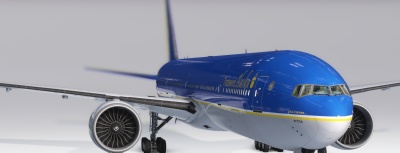
N773TA Tradewind Alaska 'Quinhagak'
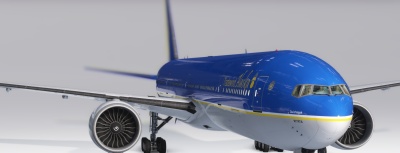
N776TA Tradewind Alaska 'Knik-Fairview'
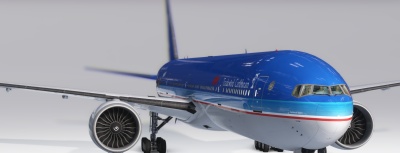
PJ-TGH Tradewind Caribbean 'Caribbean Spirit' F1 Logo
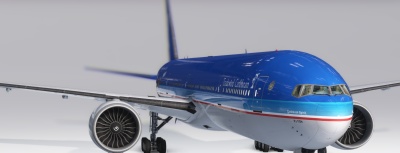
PJ-TGH Tradewind Caribbean 'Caribbean Spirit' Standard
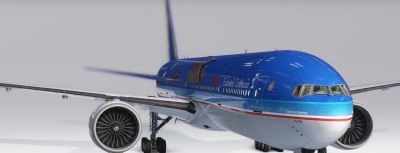
PJ-TGI Tradewind Caribbean 'Caribbean Sunrise' F1-Theme
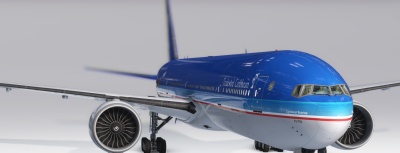
PJ-TGI Tradewind Caribbean 'Caribbean Sunrise' Standard
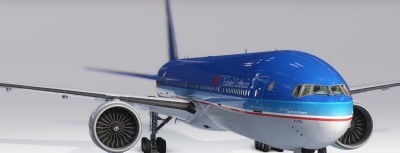
PJ-TGJ Tradewind Caribbean 'Caribbean Dream' F1-Logo
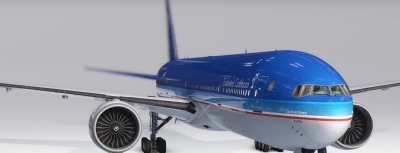
PJ-TGJ Tradewind Caribbean 'Caribbean Dream' Standard
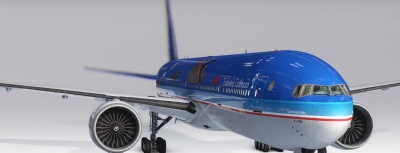
PJ-TGK Tradewind Caribbean 'Caribbean Flair' F1-Theme
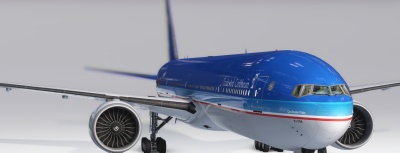
PJ-TGK Tradewind Caribbean 'Caribbean Flair' Standard
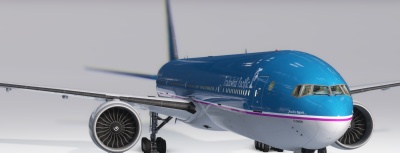
F-OHGH Tradewind Pacific 'Pacific Spirit'
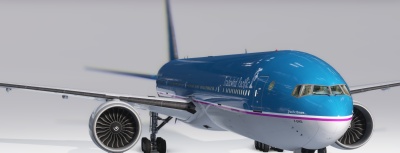
F-OHGI Tradewind Pacific 'Pacific Dream'
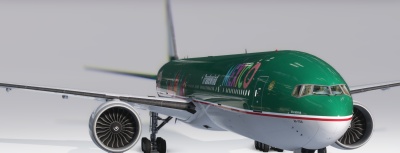
XA-TGA Tradewind Mexico 'Veracruz'
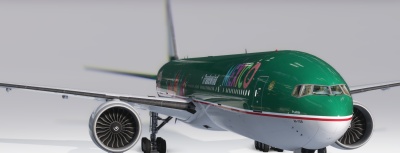
XA-TGB Tradewind Mexico 'Puebla'
More to follow
|
Boeing
777-300ER ~ PMDG
Boeing's 777-300 is powered by the world's most powerful turbofan engines.
The stretched 777-300 is designed as a replacement for early generation 747s (747-100s and 200s). Compared to the older 747s the stretched 777 has comparable passenger capacity and range, but burns one third less fuel and features 40% lower maintenance costs.
Compared with the baseline 777-200 the 300 features a 10.13m (33ft 3in) stretch, comprising plugs fore and aft of the wings. The longer fuselage allows seating for up to 550 passengers in a single class high density configuration. To cope with the stretch and the up to 13 tonne (28,600lb) increased max takeoff weight the 300 features a strengthened undercarriage, airframe and inboard wing. Other changes compared with the 777-200 include a tailskid and ground manoeuvring cameras mounted on the horizontal tail and underneath the forward fuselage. Otherwise changes have been kept to a minimum to maximise commonality.
Boeing publicly announced it was developing the 777-300 at the Paris Airshow in mid June 1995 where it revealed it had secured 31 firm orders from All Nippon, Cathay Pacific, Korean Airlines and Thai Airways. Later that month Boeing's board authorised production of the new aircraft.
The 777-300 rolled out on September 8 1997, followed by first flight on October 16 that year. The type made history on May 4 1998 when it was awarded type certification simultaneously from the US FAA and European JAA and was granted 180min ETOPS approval. Service entry with Cathay Pacific was later in that month.
Like the 777-200, a 777-300ER long range version has been developed. Changes made to the 777-300ER are more powerful General Electric GE90-115B engines (currently the world's most powerful jet engine), raked wingtips, strengthened body, wings, empennage, nose gear, engine struts and nacelles, new main landing gear, and provision for extra fuel tanks. The range, carrying 365 passengers, is increased up to 13,427km (7,250nm).
Roll-out of the first 777-300ER was made on November 14 2002, followed by the first flight on February 24 2003. First delivery, to Air France, is scheduled for March 2004
MSFS ONLY |
Other Required Files:
The payware B777-300ER by PMDG
|
Repaints by Christian Breuer
|
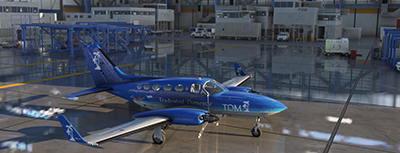
PJ-JCA Tradewind Domestic 'Cat Island'
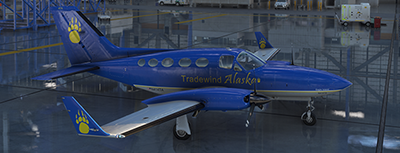
N414TA Tradewind Alaska 'Eagle Island'
MSFS ONLY
|
Cessna
C414AW 'Chancellor' - Flysimware
The Cessna 414 is an American light, pressurized, twin-engine transport aircraft built by Cessna. It first flew in 1968 and an improved variant was introduced from 1978 as the 414A Chancellor.
The pressurized 414 was developed to appeal to owners of unpressurized, twin-engined aircraft, and was based on the fuselage of the Cessna 421 and used the wing design of the Cessna 401. The 414 is a low-wing cantilever monoplane with a conventional tail unit and a retractable tricycle landing gear. It is powered by two wing-mounted 310 hp (231 kW) Continental TSIO-520-J horizontally opposed, six-cylinder engines. The prototype, registered N7170C, first flew on 1 November 1968, and production aircraft were available in a number of optional seating arrangements and avionics packages. The name Chancellor was used for models marketed from 1976. An improved variant the Cessna 414A Chancellor was introduced in 1978 with the major change being a redesigned and increased-span wing with integral fuel tanks and an extended nose to give more baggage space.
Many supplemental type certificates exist for the aircraft that allow upgrades to improve performance. Common are engine and aerodynamic modifications, including winglets.[1]
In 1974, American Jet Industries built a turboprop-powered conversion of the Cessna 414, named the Turbo Star Pressurized 414, using Allison 250-B17B engines.[2] Scenic Airlines of Las Vegas purchased the rights to the design in 1977.[3]
Thielert has offered engine conversions using their Centurion Engines.[4] This involves the installation of FADEC-controlled aviation diesel piston engines that run on commonly available jet fuel. Thielert claims increased power and improved fuel economy over other available conventional piston engines. |
|
Other Essential Files:
The payware Flysimware C414AW 'Chancellor'
|
Repaints by Christian Breuer
|
|
|